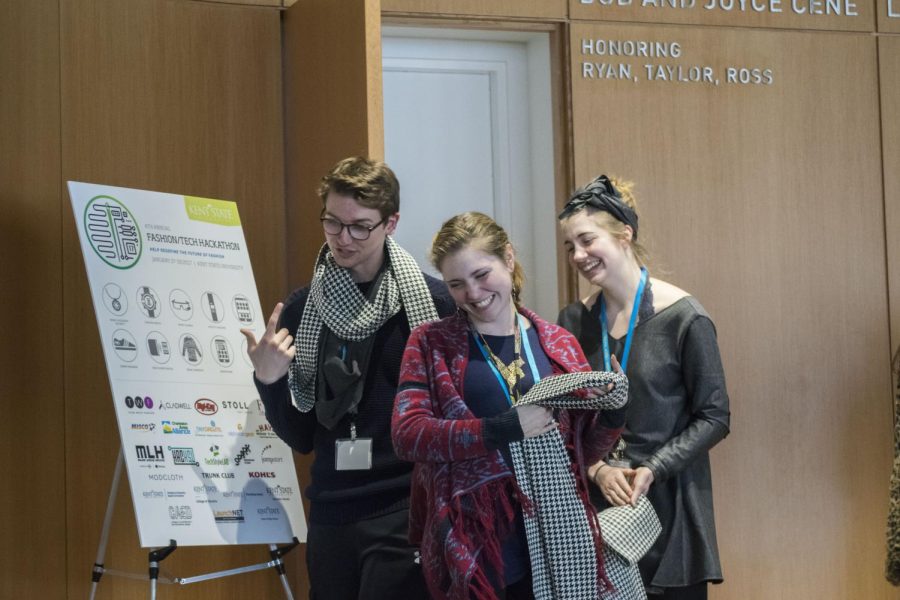0302_bv_FashionAlert_nk Stylish safety: Student team pioneers wearable distress technology
University of Pittsburgh senior math major Connor Stout and Kent State fashion design majors junior Olivia Pickard and sophomore Elizabeth Tarleton celebrate after winning during the Fashion Tech Hackathon Awards Ceremony at the College of Architecture & Environmental Design building on Sunday, Jan. 29, 2017.
February 26, 2017
Two Kent State fashion design majors incorporated safety into fashion during this year’s Fashion Tech Hackathon with their hands-free distress technology.
Sophomore Elizabeth Tarleton and junior Olivia Pickard teamed with Connor Stout, a University of Pittsburgh applied mathematics major, for the 36-hour challenge that began Friday, Jan. 27.
“We knew who our team was before we even got there,” Pickard said. “While everyone else was formulating their teams, we were already looking at the technology and fabric we could use.”
“The idea for the garment came together during the first couple hours of the Hackathon,” Tarleton said. “Originally, we wanted a mini Taser to be located on the wrist for warding off an attacker, but the project just evolved as we worked on it.”
The product, later deemed “An Eve Without Adam,” consists of a piece of conductive plastic underneath the leaves on the neckline and a piece on the wrist. These pieces are connected through a battery pack and a series of small single-board computers called Raspberry Pi.
“If we had the technology available, we could have easily made it wireless,” Pickard said, “which would be ideal, because having wire running against you all night could prove to be very uncomfortable.”
When the wrist connects with the neckline for a two-second time period — just long enough to remain inconspicuous while in the public eye — an SOS message is sent to a predetermined phone number.
“A lot of people went the protection route,” Tarleton said. “We took more of an uncomfortable situation route.”
Currently, the technology is not affiliated with a mobile app, but it is a perfectly feasible idea, according to the team. If paired with an app, users could change the message sent and the recipients beforehand.
“We considered having different leaves on the dress be able to send different messages, or multiple conductors that would allow for various gestures,” Tarleton said.
The technology can also be applied to men’s clothing, accessories or a child’s backpack, and is not limited to specifically “in distress” situations.
“If you have issues with anxiety, the product can also be used for that,” Pickard said. “Maybe you’re having an anxiety attack but you don’t want to draw attention to yourself and need to alert someone.”
The team was awarded best use of technology in creating new fashion products at this year’s Hackathon.
The team is in the process of working out a patent for the dress.
“I think patenting the product is a great idea,” Tarleton said. “It could be a nice side company for us.”
Nicholas Kotch is the consumer tech reporter, contact him at [email protected]

























